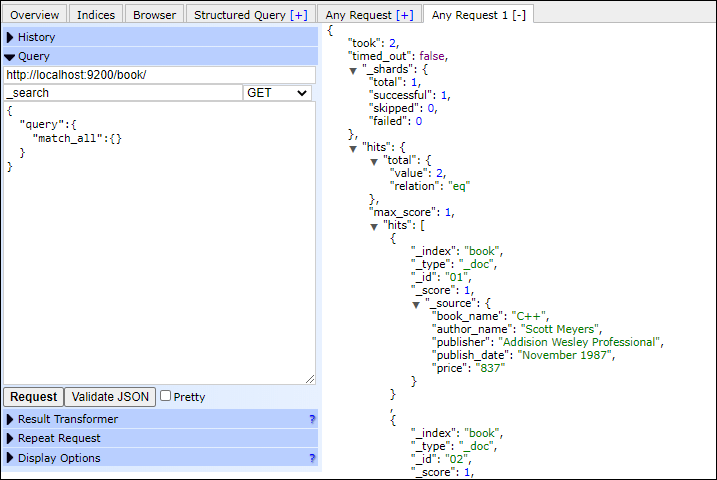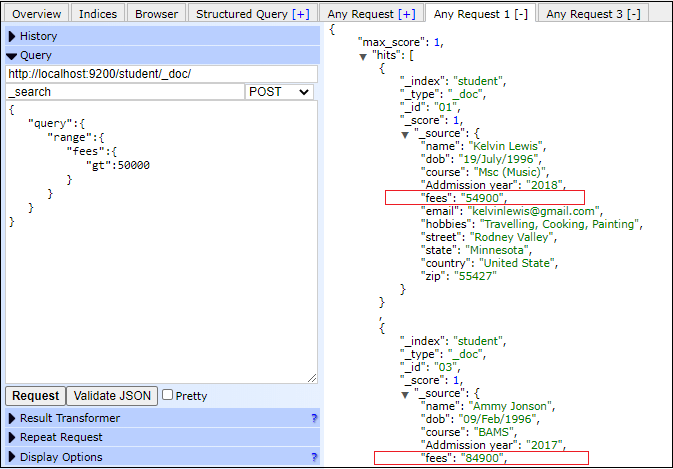

Using the aggs condition, we can get document counts on all the terms for summary with additional filtering on temperature being greater-than or equal to 60. See the Official documentation on aggregations for a deeper understanding.
#Elasticsearch query json update
Basic CRUD APIĮlasticsearch implements a REST API with the HTTP verbs GET for read operations, PUT for update or replace, and DELETE to remove a document.īelow are examples of basic counts, averages, minimums and maximums along with histograms for percentile and percent rank. Indexes with names like payments-20180801, payments-20180802, payments-20180803 can be queried together with a wildcard, for instance, queries needing to search all payments for August may reference the index payments-201808-*.

With Elasticsearch it is common to split indexes by date for time-series data.
#Elasticsearch query json install
You can install Elasticsearch directly on your workstation, or port-forward services from a Kubernetes cluster.
#Elasticsearch query json full
In a few hours, you can have a highly-available, horizontally scalable, big data solution, ready for enterprise style experiments, and with some domain-aware tuning, a full production system.īelow, I access the Elasticsearch API through my local port 9200.

If you want to set up a production-grade Kubernetes and Elastic cluster, I recommend checking out my Production Hobby Cluster guide, followed by Kubernetes Team Access, RBAC for developers and QA, Production Grade Elasticsearch on Kubernetes, Kibana on Kubernetes and finally High Traffic JSON Data into Elasticsearch on Kubernetes. If you followed that guide, you could run against a similar set of data. Many of the examples I use in the range and filtering examples below are a result of setting up a reference implementation for supporting the ingestion of High Traffic JSON Data into Elasticsearch on Kubernetes. Following Along with Elasticsearch and Kubernetes However, most technical documentation is either for getting started or gives you every variation of every feature, which is great when you are neck deep and need a specific problem solved. Transitioning our thinking from SQL to the Lucene syntax on occasion requires hitting the docs. My team and I work with a lot of SQL-based data, from MySQL, SQLite and even our large Cassandra cluster, however, our reporting systems are built on Elasticsearch.



 0 kommentar(er)
0 kommentar(er)
